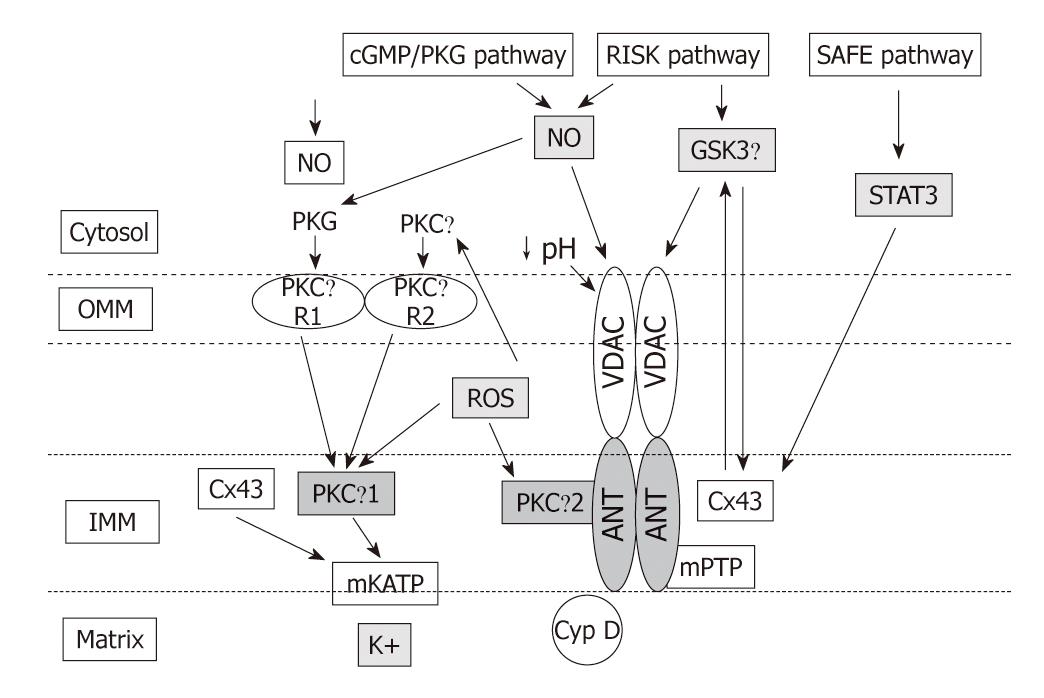Copyright
©2011 Baishideng Publishing Group Co.
World J Cardiol. Jun 26, 2011; 3(6): 186-200
Published online Jun 26, 2011. doi: 10.4330/wjc.v3.i6.186
Published online Jun 26, 2011. doi: 10.4330/wjc.v3.i6.186
Figure 3 Extra- and intra-mitochondrial signalling: interactions among Cx43, mKATP, PKCε, ROS, and mPTP.
The mPTP is believed to be composed of the adenine nucleotide transporter (ANT) in the inner membrane (IMM), the voltage-dependent anion channel (VDAC) of the outer membrane (OMM), and cyclophilin D (Cyp D) in the matrix. Signals arising from RISK and SAFE pathways are delivered to mitochondrial permeability transition pore (mPTP) via nitric oxide (NO)/glycogen synthase kinase 3 β (GSK3β) and signal transducer and activator of transcription 3 (STAT-3), respectively, and then to connexin 43 (Cx43) on the IMM. Signals arising from cGMP/PKG are delivered to mitochondria via the terminal protein kinase G (PKG). PKG phosphorylates an unknown OMM receptor, “R1”, whereas PKCε act in conjunction to activate a distinct OMM receptor, “R2”. These OMM receptors transmit the signal by an unknown mechanism to PKCε1 located at the IMM. The activated PKCε1 phosphorylates and opens mitochondrial ATP-sensitive potassium (mKATP). Also Cx43 located at the IMM regulated mKATP opening. The mKATP opening via PKCε1 causes K+ uptake and increased ROS production from respiratory chain. ROS produced by mKATP activation now diffuses and activates both PKCε1 and PKCε2 on the IMM and PKCε in the cytosol. ROS signalling may represent the link between mitochondria and cytosol. mPTP opening is prevented by cytosolic pH lowering, ROS signalling and PKCε2 activation.
- Citation: Perrelli MG, Pagliaro P, Penna C. Ischemia/reperfusion injury and cardioprotective mechanisms: Role of mitochondria and reactive oxygen species. World J Cardiol 2011; 3(6): 186-200
- URL: https://www.wjgnet.com/1949-8462/full/v3/i6/186.htm
- DOI: https://dx.doi.org/10.4330/wjc.v3.i6.186









